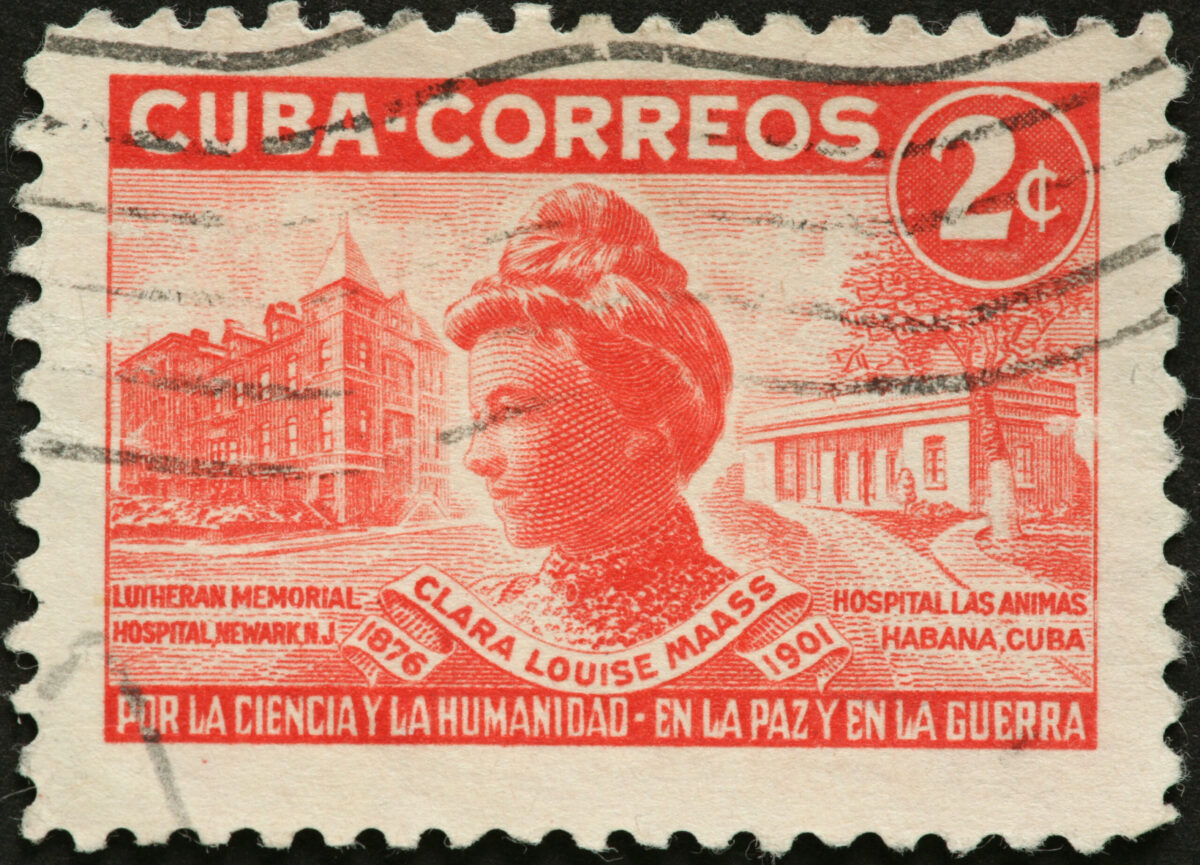“Hardly a man has yet died from it,” wrote Colonel Theodore Roosevelt in his now infamous 1898 Round-Robin Letter. “But the whole command is so weakened and shattered as to be ripe for dying like rotten sheep, when a real yellow-fever epidemic instead of a fake epidemic, like the present one, strikes us, as it is bound to do if we stay here at the height of the sickness season, August and the beginning of September.”
During the 1898 Spanish-American War one of the greatest threats to U.S. soldiers was not the enemy, but malaria and yellow fever—so much so that more men perished from yellow fever in Cuba than were killed by the Spaniards.
Doctors raced to uncover the source of the illness as the disease laid waste to American soldiers. Members of the U.S. Army Yellow Fever Commission Walter Reed, Henry Rose Carter, and Jesse Lazear, alongside Cuban epidemiologist Carlos Finlay began testing their theory of mosquito transmission, specifically the Aedes aegypti variety.
Lazear, famously among the first test subjects, contracted yellow fever and died in September 1900 at the age of 34. Yet the death of another test subject, Clara Maass, has gone largely unrecognized and may have been lost to history without the efforts of Leopoldine Guinther, the superintendent of Newark Memorial (formerly German) Hospital, where Maass had once worked as a nurse.
Born on June 28, 1876 in East Orange, New Jersey, Maass was the oldest of 10 children. Growing up in abject poverty, Maass became one of the first to graduate from the Christina Trefz Training School for Nurses at Newark German Hospital in order to generate any sort of income for her family.
Maass, serving as a contract nurse for the U.S. Army during the Spanish-American War and again during the Philippine-American War, contracted dengue fever and was sent home after seven months in the Philippines.
However, after receiving a telegram from Major General William Gorgas, Chief Sanitary Officer in Havana, Cuba, who sought out volunteer nurses, Maass once again answered her nation’s call and returned to Cuba.
By the time Maass arrived in 1901, the transmission of yellow fever via mosquitoes was almost certain within the medical field. However, “under the direction of Dr. John Guiteras,” according to the Clara Maass Medical Center, in the hopes that “a controlled infection by the bite of an infected mosquito would produce a controllable case of yellow fever, followed by immunity,” 19 participants were selected to participate in the latest medical trial.
Maass, the only woman as well as the only American, volunteered to be purposefully infected with yellow fever and was bitten seven times during the months of March, May, June, and August of 1901. In June the nurse had contracted a mild form of the illness, so mild in fact that physicians did not believe her to be immunized from the bite.
She was bitten for the last time on August 14 and fell ill four days later. Maass eventually died on August 24, 1901, at the age of 25.
After the death of Maass doctors deemed that “the bit[e] of infected mosquitoes could not be used as a safe way to provide immunity,” writes the Clara Maass Medical Center. No further experiments were conducted.
Buried in Havana, Maass was disinterred and returned to the United States a year later. Largely through the efforts of Guinther, Maass’ memory and her sacrifice was kept alive.
In 1952, the Newark German Hospital (renamed Newark Memorial Hospital in 1918), where Maas once worked as a teen, changed its name to Clara Maass Memorial Hospital in her honor. Today, it is known as Clara Maas Medical Center.





